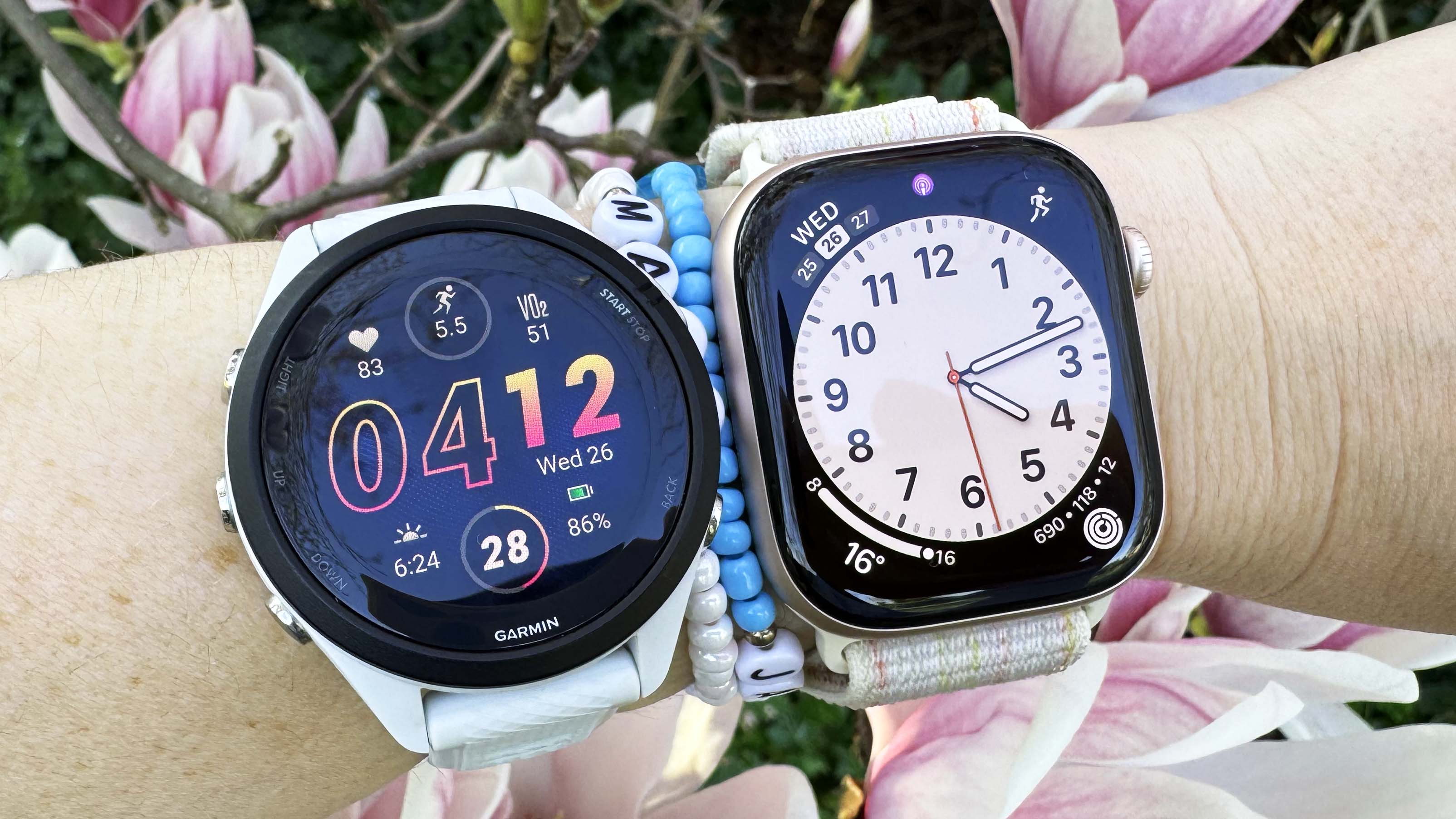I walked 7,000 steps with the Apple Watch 10 and Garmin Forerunner 265 — and one was way more accurate
I put the two popular fitness trackers head-to-head

Ever wondered which is more accurate — the Apple Watch Series 10 or the Garmin Forerunner 265 when it comes to counting your steps?
To find out more, I strapped both watches to my wrist and manually counted my steps, then compared the results. Read on to find out which watch was more accurate.
I’ve been doing these watch comparisons for years now, and always start by looking at how both watches count your steps. When setting up one of the best Apple Watches or the best Garmins, you’ll be asked to input your height and weight so that the watch can calibrate your calorie expenditure, but when it comes to measuring steps, both watches use the swing of your arm.
Each swing counts for two steps. It doesn’t matter whether you wear the watch on your dominant or non-dominant hand, the accelerometer should still measure your body’s movement.
That said, I have found that when pushing my son in his stroller, my Apple Watch often struggles to recognize my walk as a walk, so for this challenge, I left both my baby and his pushchair at home. I wore the Apple Watch 10 on my left wrist, and the Garmin Forerunner 265 on my right.
I walked 7,000 steps with the Apple Watch 10 and Garmin Forerunner 265 — here’s which was more accurate
For this test, I did several different walks. The first two walks were in the city, as I walked between different meetings in London. I wasn’t in a particularly built-up area of the city, but I still wanted to see how the watches compared in a busy urban setting.
For the third walk, I headed out for a hike with the dog to my local woods. Again, I wasn’t particularly remote, but I walked for two miles in a wooded area.
Sign up to get the BEST of Tom's Guide direct to your inbox.
Get instant access to breaking news, the hottest reviews, great deals and helpful tips.
I’ve done enough of these challenges to know I’m not very good at counting to large numbers in my head, so I dug out my trusty clicker counter. Every step I took, I clicked. When I got home, I downloaded all the data. I used the StepsApp on my Apple Watch, as Apple still doesn’t let you see the step count of your walk, just your overall step count from the day, and I wanted more accurate numbers.
Here are the results:
Apple Watch 10 | 1,574 steps |
Garmin Forerunner 265 | 1,732 steps |
Manual | 1,691 steps |
Apple Watch 10 | 1,252 steps |
Garmin Forerunner 265 | 1,416 steps |
Manual | 1,400 steps |
Apple Watch 10 | 4,153 steps |
Garmin Forerunner 265 | 4,382 steps |
Manual | 4,353 steps |
Apple Watch 10 | 6,979 steps |
Garmin Forerunner 265 | 7,530 steps |
Manual | 7,444 steps |
As you can see from the data, the Garmin Forerunner 265 was only 86 steps out of the manual recording, whereas the Apple Watch 10 missed 465 steps.
Of course, to truly test the accuracy of the two watches, you’d need to do a lot more testing on a much bigger scale, but I was impressed at how pretty much spot-on the Forerunner 265 was.
That’s not to say the Apple Watch 10 isn’t accurate. The average person takes 2,000 steps in a mile, so 465 steps isn’t a huge amount. Interestingly, for the third walk, my Apple Watch recorded the distance as 2.02 miles, whereas my Garmin recorded 2 miles exactly. Again, we’re talking about very small differences here.
It’s also worth noting that both these watches do a lot more than count your steps. The Apple Watch 10 is the best smartwatch on the market and is like having your iPhone on your wrist. The Garmin Forerunner 265, by comparison, doesn’t have as many smartwatch features but is designed to accurately track your marathon training, making it one of the best running watches on the market.
Finally, while counting steps isn’t always the best metric to focus on when it comes to getting in shape and losing weight, it’s a good place to start. A review of 32 studies, published in the International Journal of Behavioral Nutrition and Physical Activity found that “10,000 steps/day is a reasonable target for healthy adults.”
Adding more steps to your day might be as simple as jumping off the subway a stop sooner and walking some of your commute, or investing in one of the best walking pad treadmills to walk as you work.
Walking can help you lose weight, build muscle, and feel less stressed, however you track your steps. Don’t believe me? Here’s what 30 minutes of walking each day can do for your body.
More from Tom's Guide

Jane McGuire is Tom's Guide's Fitness editor, which means she looks after everything fitness related - from running gear to yoga mats. An avid runner, Jane has tested and reviewed fitness products for the past five years, so knows what to look for when finding a good running watch or a pair of shorts with pockets big enough for your smartphone. When she's not pounding the pavements, you'll find Jane striding round the Surrey Hills, taking far too many photos of her puppy.
You must confirm your public display name before commenting
Please logout and then login again, you will then be prompted to enter your display name.
